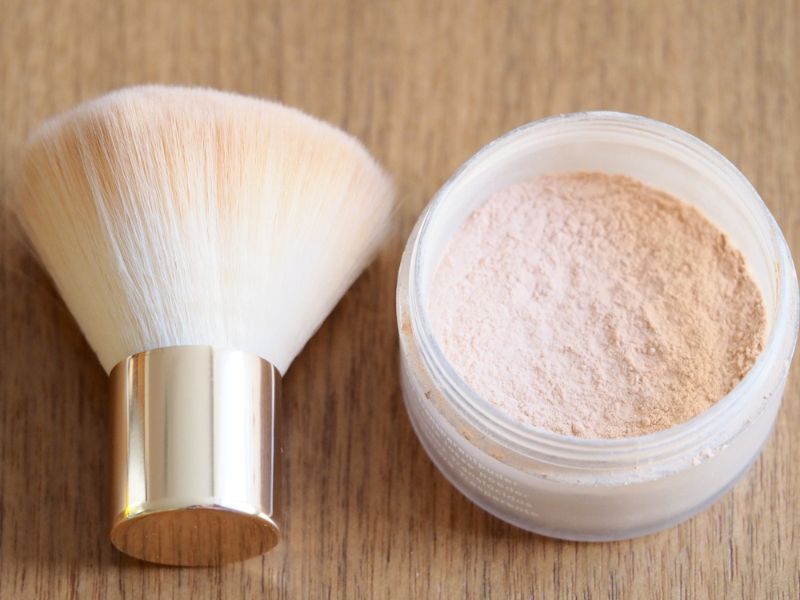Talc is a mineral composed of magnesium, silicon, and oxygen, commonly used in cosmetic products such as makeup, baby powder, and body powders. The safety of talc in cosmetic products has been a topic of concern, primarily due to its potential association with cancer. Here’s what experts say about the safety of talc in makeup.
The controversy surrounding talc began in the 1970s when researchers found talc particles in ovarian tumors. Since then, several studies have suggested that talc use may increase the risk of ovarian cancer. However, the evidence is inconclusive, and some studies have found no association between talc and ovarian cancer.

Image Credit: Shutterstock/Subbotina Anna
According to the American Cancer Society, the overall risk of developing ovarian cancer is low, and using talc in cosmetics may only slightly increase the risk. The organization also states that more research is needed to understand the link between talc and ovarian cancer fully.
The safety of talc in cosmetics has been evaluated by various regulatory agencies worldwide, including the US Food and Drug Administration (FDA) and the European Union (EU). The FDA considers talc to be generally safe for use in cosmetics, and it has not banned talc from cosmetics. The EU has also approved the use of talc in cosmetics, but it requires that talc used in cosmetics must be free from asbestos, a known carcinogen.

Image Credit: Shutterstock/Anna Anatol
Despite the lack of conclusive evidence linking talc to cancer, some cosmetic companies have stopped using talc in their products, and many consumers are opting for talc-free cosmetics. However, it’s important to note that talc-free does not necessarily mean safe, as some alternative ingredients may also have potential health risks.
In conclusion, the safety of talc in cosmetics remains a controversial topic. While some studies suggest that talc may increase cancer risk, the evidence is inconclusive. Regulatory agencies such as the FDA and the EU consider talc to be safe for use in cosmetics as long as it is free from asbestos. However, consumers may choose to avoid talc-based products and opt for talc-free alternatives. As with any cosmetic product, it’s essential to read labels and research to make informed decisions about what products to use.